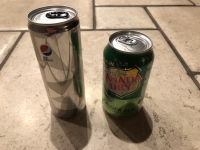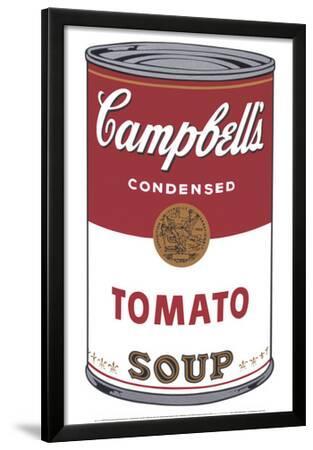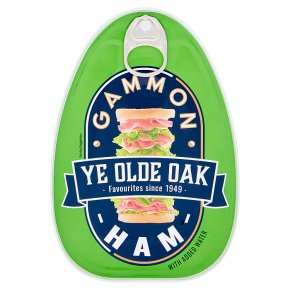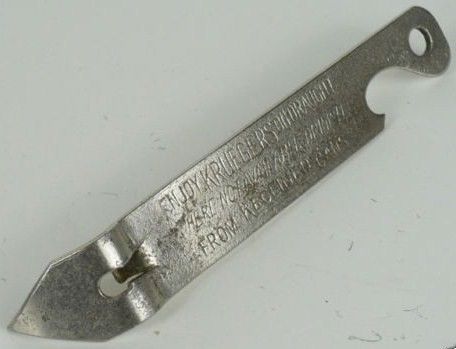Poll
 | 1 vote (6.66%) | ||
 | 5 votes (33.33%) | ||
| No votes (0%) | |||
 | 2 votes (13.33%) | ||
 | 1 vote (6.66%) | ||
| No votes (0%) | |||
 | 5 votes (33.33%) | ||
 | 1 vote (6.66%) | ||
 | 2 votes (13.33%) | ||
 | 5 votes (33.33%) |
15 members have voted

At Cutting Edge they had in the bin of drinks some skinny soda cans. I checked the volume, and it was the same, 12 ounces, or 355 ml., as the conventional size can. This bothered me, because there must be some optimal dimensions of a can to enclose 355 milliliters. At least one of these cans had to be off of the optimal dimensions, and I suspected it was the tall skinny one.
Let me preface the following by saying that I know that a soda can is not a perfect cylinder. It is tapered at the ends and the bottom is concave. However, for the take of simplicity, let's ignore that. I think these factors are minor compared to the big picture of minimizing surface area.
Let me also make all do apologies to my fellow Yanks by doing this whole discussion in the metric system. To heck with that, I don't apologize and am all in favor of converting to it.
That said, I show the following height, radium, volume, and surface areas of both cans. All measurements in centimeters.
| Measurement | short | long |
|---|---|---|
| height | 11.316 | 15.275 |
| radius | 3.160 | 2.720 |
| volume | 354.991 | 355.033 |
| surface area | 287.419 | 307.539 |
In other words, the tall can is using 7% more aluminum than the short can. This bothers me as I find it very wasteful.
Doing some calculus, I find the optimal can size to be even shorter and thicker than the current can, by a significant degree. To be specific, the optimal size can should be 68% the height of the conventional can. Let's call that the Wizard size.
| Measurement | Short | Long | Optimal |
|---|---|---|---|
| height | 11.316 | 15.275 | 7.674 |
| radius | 3.160 | 2.720 | 3.837 |
| volume | 354.991 | 355.033 | 355.000 |
| surface area | 287.419 | 307.539 | 277.545 |
Note that my Wizard size can uses 3.4% less aluminum than the standard size to enclose the same 355 milliliters.
The question for the poll is what size can do you think we should use?

I'm in Australia.
So my answer to the poll is other - I think beverage companies should use the size and shape of can that makes them the most money.
Also, this is a surprisingly interesting video on the history of Aluminum can design. It answers your question about the bevels as well.
https://youtu.be/hUhisi2FBuw
One other thing to consider is that the skinny cans are more optimal for cooling the can. The larger surface area and the lower radius will allow the beverage in the skinny can to cool down to the desired temperature faster than the standard or "optimum" cans.
As for the "wasted" aluminum, don't most aluminum cans get recycled these days? Or am I just dreaming?
Whatever the reason, 7% more aluminum seems like a LOT. There better be a REALLY good reason to justify it.
I'd also like to remind everyone that a spherical container has the highest volume to surface area ratio, but is the worst in regard to wasted space when packed in a sipping container. Could the skinny can save enough shipping space to make it worth it?
But the skinny can (as well as the Wiz optimal can) has too many hurdles to overcome. Mostly that can/cup holders and coozies, etc, are designed for the standard can.
After all, there's a reason that the 16oz beer can is taller but the same diameter as the 12oz can. Also note that you can purchase soda in 8oz cans that are shorter but same diameter as 12oz cans.
By the way, I believe the dent in the can bottom is because of the pressure. I.E. It if was a flat bottom, by the time it got to the consumer, the pressure would cause a bulge. Of course, that doesn't explain the similar dent in the bottom of glass beer bottles or the crazy deep dent in glass wine bottles....
IIRC, a few reasons why the "not-optimal" size is used:
1. More aluminum (thank God you didn't write "aluminium" like a dirty Brit) is used on the top/bottom than what you're assuming, since you assumed a perfect cylinder.
2. Ergonomics - Holding a can in your hand fits rather well. The short one is I reckon like 16% bigger than the tall one (width) while the "optimal" one is 20% wider than the short.
3. 100% optimization isn't necessary and optimizing (minimizing) the amount of aluminum used isn't necessarily the #1 goal. For instance, soda cans are generally purchased in either 6, 12, or 24 packs -- and it could be that the size of multiple cans (6, 12, or 24) is more optimal for transport given the current size rather than the "wizard optimal" sized cans. It could be more efficient to use the 'regular' size cans than the 'wizard optimal' size cans due to something in the manufacturing/ process (not that I can even guess at what it may be, if it even exists).
Or perhaps it's just so ingrained in the business, it's not worth it to make a switch to use 3.4% less aluminum. I believe the can manufacturers aren't necessarily the same as the bottling company (like Pepsi or Coca Cola), which would make it even more difficult to make the switch -- because the can manufacturer would have to make new machines to make the new optimal cans which would cost money for their one client just to save 3.4%...but would (IMO) potentially cost the client more than what they're saving.
To see which one has more aluminum, take the empty cans and weigh them. If you really want to be precise rinse out the cans with water and then use a dryer to evaporate all of the water.
To answer the optimal can size it would be dependent on what you are doing with it and how you are storing it. My portable cooler works best with the shorter cans because they fit better. My larger cooler the taller ones would be best because it is easier to pack other stuff with them.
I think the real question should be what is the optimum ounces. They make 8 ounce cans, 12 ounce cans, 16 ounce bottles, and 24 ounce bottles. In a bottle I prefer 16 ounces. In a can I would actually like them to drop it to 10 ounces. 8 ounce is too little and quite often I waste a little bit in the 12 ounce ones.
Quote: JoemanOne other thing to consider is that the skinny cans are more optimal for cooling the can.
Good point. To be specific, the rate of heat transfer is proportional to the surface area, conductivity of the metal, and difference between the outside and inside temperature.
Quote:As for the "wasted" aluminum, don't most aluminum cans get recycled these days? Or am I just dreaming?
That's getting off topic a bit, but I will say I knew someone who worked for Republic Services, who pick up the trash and recycling in Las Vegas. She said, despite getting free material to recycle, the only thing they turn a profit on is cardboard. I think it could be said that recycling requires more energy than making a fresh can. I'd be interested to see an unbiased study of the pros and cons of recycling, but for now I'm trying to keep the topic at hand simple at optimizing the can shape to enclose 355 milliliters. Also, the larger the volume, the more squat the can size will be.
Quote: DJTeddyBear....By the way, I believe the dent in the can bottom is because of the pressure. I.E. It if was a flat bottom, by the time it got to the consumer, the pressure would cause a bulge. Of course, that doesn't explain the similar dent in the bottom of glass beer bottles or the crazy deep dent in glass wine bottles....
IIRC, the indentation on glass bottles is or was due to some process in the glassblowing process way back in the day and it's easier to make a "flat" bottom as opposed to a bumpy one if it's just a hollow circle. Nowadays I think it's due to tradition (it's always been done that way, so still make them that way now).
Source: I've watched hours of "pointless" YouTube videos. Check out Practical Engineering, Wendover Productions, Half As Interesting, and other channels like them because they interesting AF. Oh yeah, also VSauce and his channels as well as Numberphile.
Quote: RS.... the indentation on glass bottles is or was due to some process in the glassblowing process way back in the day and it's easier to make a "flat" bottom as opposed to a bumpy one if it's just a hollow circle. Nowadays I think it's due to tradition (it's always been done that way, so still make them that way now).
The video gamefreak posted, starting around the 2:50 point, said the reason for the dome in an aluminum can is because it distributes the pressure from the weight of the beverage more efficiently on the bottom of the can, requiring less material.
Maybe the same is true of wine bottles.
I havent seen the 8oz cans in a while. They now have the mini cans, they are 7.5 fl oz. It's shorter and skinnier than a normal can. The mini cans height comes up to where the necking starts on a normal can. Its diameter is the same as the top of a normal can. I like the mini cans best since I rarely drink a lot of soda at once, it's less wasted flat soda.Quote: DJTeddyBearThere could be any number of reasons that the skinny can is in use. Maybe some marketing genius decided that it's got better visual appeal Maybe it's merely easier to handle. Maybe it retains carbonation better.
Whatever the reason, 7% more aluminum seems like a LOT. There better be a REALLY good reason to justify it.
I'd also like to remind everyone that a spherical container has the highest volume to surface area ratio, but is the worst in regard to wasted space when packed in a sipping container. Could the skinny can save enough shipping space to make it worth it?
But the skinny can (as well as the Wiz optimal can) has too many hurdles to overcome. Mostly that can/cup holders and coozies, etc, are designed for the standard can.
After all, there's a reason that the 16oz beer can is taller but the same diameter as the 12oz can. Also note that you can purchase soda in 8oz cans that are shorter but same diameter as 12oz cans.
By the way, I believe the dent in the can bottom is because of the pressure. I.E. It if was a flat bottom, by the time it got to the consumer, the pressure would cause a bulge. Of course, that doesn't explain the similar dent in the bottom of glass beer bottles or the crazy deep dent in glass wine bottles....
In P.R., the cans of beer and soda were all ten ounces, and I recall liking that size better except for spending more for the same amount of beer..
Let:
r = radius of the can
h = height of the can
v = volume of the can
s= surface area of can
We know from simple geometry that the surface area = 2*pi*r^2 + 2*pi*r*h.
Likewise, we also know the volume is pi*r^2*h, which we're given equals 355.
So, 355=pi*r^2*h.
Let's rearrange that to:
(1) h = 355/(pi*r^2)
We know:
(2) s = 2*pi*r^2 + 2*pi*r*h.
Let's get that to a function of just one variable by substitute our expression for h in equation (1) into (2):
s = 2*pi*r^2 + + 2*pi*r*(355/(pi*r^2))) = 2*pi*r^2 + 710/r.
Let's take the derivative of s and set it equal to zero, to solve for the optimal r.
ds/dr = 4*pi*r - 710/(r^2 ) = 0
4*pi*r = 710/(r^2)
Multiplying both sides by r^2:
4*pi*r^3 = 710
r^3 = 177.5/pi.
r = (177.5/pi)^(1/3) = 3.837215248.
Plug that value into equation (1) to get h = 7.674430496.
I suspect the skinny can is a marketing ploy. Similar to buying a box of cereal that is the same size, but has less product in it. The skinny can is a gateway to the 3/4 and half cans, which, as previously noted, will sell for the same price.
The vending cans in Asia have been small for a long time, so the manufacturing equipment must be readily available (especially since the cans are manufactured overseas). Maybe it's better for America to consume less packaged drink rather than going the Australian beer can way and getting mini-kegs.
Obviously the ideal can for minimal surface area would be spherical. They could also use thinner metal too because it would have less stress vulnerabilities. bu99er to manufacture or drink from though.Quote: WizardAt least one of these cans had to be off of the optimal dimensions, and I suspected it was the tall skinny one.
Note that my Wizard size can uses 3.4% less aluminum than the standard size to enclose the same 355 milliliters.
The question for the poll is what size can do you think we should use?
The skinny cans are an obscenity to an environmentalist.
Ya flunked this one on two counts, Michael*. #1, asking such a person the inner workings of that business is like asking a dealer what the best strategy is for playing game XYZ. #2, you should have realized that to cite cardboard value is like citing something like "if the guy on third base plays it wrong, he takes the dealer's bust card and makes everyone lose" - cardboard recycling is heavily subsidized or it would be the biggest loser for them imaginable. Aluminum, however, has real value. You can take it yourself to various places who will give you about a penny a can I think. It has to be what helps the recycling pay for itself without help from the taxpayers.Quote: WizardI knew someone who worked for Republic Services, who pick up the trash and recycling in Las Vegas. She said, despite getting free material to recycle, the only thing they turn a profit on is cardboard. I think it could be said that recycling requires more energy than making a fresh can.
*yes, I'm being hard on you. That's in advance for any charts you will be making in the Clue game
Quote: OnceDearObviously the ideal can for minimal surface area would be spherical.
I don't know what can means in English English, but here is means the same thing as a cylinder.

Define cylinder then :o)Quote: WizardI don't know what can means in English English, but here is means the same thing as a cylinder.


Actually, We tend to say "a tin of soup" rather than "a can of soup"... or spam
My spherical can was just a concept, of course....
https://falconvision.en.made-in-china.com/product/uBUxecXjfRhN/China-Spherical-Ball-Shaped-Tins-Candy-Tin-Box.html
Quote: OnceDearDefine cylinder then :o)
I would say it is the region formed by rotating a rectangle around one of it's sides, that is kept fixed. So your examples would not be cylinders.
Source

So, would those pictures of mine be referred to as cans of meat product? Serious question. I read "can" as defined as a metalic container generally or typically cylindrical.Quote: WizardI would say it is the region formed by rotating a rectangle around one of it's sides, that is kept fixed. So your examples would not be cylinders.
I think "can" is more typically used for the noun, by Americans, and "tin" is used by the English
A tin of soup: A tin of beans: A tin of pop: A tin of Spam.
I was joking about defining 'cylinder'
Quote: OnceDearSo, would those pictures of mine be referred to as cans of meat product?
I would just call them cans. I'm not sure if there is a more formal mathematical term.
Back in the day, we in the US used to call them Tin Cans.Quote: OnceDearI think "can" is more typically used for the noun, by Americans, and "tin" is used by the English
A tin of soup: A tin of beans: A tin of pop: A tin of Spam.
Of course, that was back when they were made of tin. Or at least we thought they were tin.
Now, whether you pronounce aluminum with 4 or 5 syllables, it’s too many, so we simply say Can.
On that note, aren’t soup/meat cans made from steel?
-one of my favorite lines from the old "Inspector Morse" series is when Lewis gets some beer for them and Morse says in disgust , quite plaintively, "tinned lager, Lewis!"*
-our local recycle center categorizes one bin as "tin cans", I guess it's confusing to folks to do anything else
-my wife can't tell the difference between aluminum cans and the other cans. That I find remarkable.
-I think I screwed up with my attempt at humor upthread. I know Michael does not like to be called out in his own website [I still consider it that] but I did it anyway, perhaps the humor was flat. My apologies, Michael, if you are reading this.
-I feel obligated now to back up what I said, as a way of making up for it, so here comes:
-aluminum cans
Quote: https://bigthink.com/dangerous-ideas/14-recycling-is-a-wastethe reality is that aluminum cans, priced between one and five cents, are on average the most valuable recyclable in your trash. (Producing aluminum cans from recycled aluminum saves about 90-95% the energy used to make aluminum cans from scratch...)
-I'm having difficulty backing my statement about cardboard recycling so far, it's hard to find much on the issue of subsidy using google . I'll have to say 'I can't prove it but I suspect' it normally has to be subsidized. However, it seems that in recent times, China has paid good prices for it. Now that this has stopped, I have to assume they over-valued it. Here's one reason, and I have noted that now our local recycling people are saying "no pizza boxes",
Quote: https://www.cnbc.com/2015/05/28/why-trash-is-no-longer-cash-for-recycling-biz.htmlJust one pizza box in a cardboard recycling pile can ruin the whole batch, since oils in it can’t be separated from the paper fiber.
-Yes, China has put the brakes on.
Quote: https://www.usatoday.com/story/news/nation/2018/11/23/recycling-crisis-has-come-holidays/2054199002/This holiday season collides with what has become known as the great recycling crisis. Earlier this year, China, which for years has been America's go-to nation for processing recyclables into new boxes, started rejecting all but the cleanest, purest loads.
*off topic, but my favorite line is when Morse gets a call from his old college and, plaintively again, reacts "My Alma Mater? Reduced to this? telephone solicitation?
now this begs the question:Quote: WizardDoing some calculus, I find the optimal can size to be even shorter and thicker than the current can, by a significant degree. To be specific, the optimal size can should be 68% the height of the conventional can. Let's call that the Wizard size.
Measurement Short Long Optimal height 11.316 15.275 7.674 radius 3.160 2.720 3.837 volume 354.991 355.033 355.000 surface area 287.419 307.539 277.545
Note that my Wizard size can uses 3.4% less aluminum than the standard size to enclose the same 355 milliliters.
Why does the soda can industry with all their high priced consultants and executives choose the soda can we know today ('Short' can in the data table, 4.5" tall x 2.5" diameter) vs Wizard's optimal (3" tall x 3" diameter)?
that .5" width difference really affects the way we hold the can?
more slimmer:

(normal 12oz can for comparison)
Why are you launching skinny cans for Diet Coke?
The sleek can packaging is one aspect of a completely new Diet Coke visual identity. Sleek cans offer a more premium drinking experience for our fans, and they visually represent an evolution of the brand’s personality, standing taller and more assertive. (It also is important to note that standard 12-ounce Diet Coke cans will continue to be available in 12-packs.)
since the 60's when I drank beer.
I always bought soda in 2 liter
bottles but I quit drinking that
10 years ago. Can free for 50 years.
Quote: EvenBobI haven't bought anything in a can
since the 60's when I drank beer.
I always bought soda in 2 liter
bottles but I quit drinking that
10 years ago. Can free for 50 years.
OG Hipster over here....
Quote: TigerWuOG Hipster over here....
Last time I bought a can, it had
a pull off tab.

Quote: EvenBobLast time I bought a can, it had
a pull off tab.
I've bought soda with those pull tabs in foreign countries as late as the mid-2000's.
used these to open can. Church keys
they were called.

My mom still calls it that.Quote: EvenBobWhen I first started drinking beer, we
used these to open can. Church keys
they were called.
Quote: AxelWolfMy mom still calls it that.
Those old steel cans were heavy
as hell. Aluminum cans blew us away
they were so light.

Quote: EvenBobThose old steel cans were heavy
as hell. Aluminum cans blew us away
they were so light.
Huh I wonder why Coors knocked Adolf off the name
Quote: gamerfreak
Huh I wonder why Coors knocked Adolf off the name
In fact, we couldn't get Coors in MI
in the 60's. It wasn't sold east of
the Mississippi till years after that.
Truck drivers would bring cases of
it back and sell it to their friends.
I don't know why, it tasted like
Moose piss. I only drank Stroh's,
and they eventually ruined that
too.


